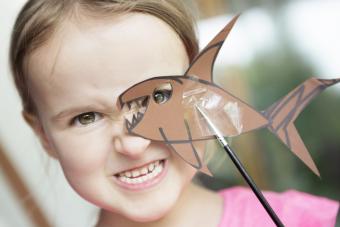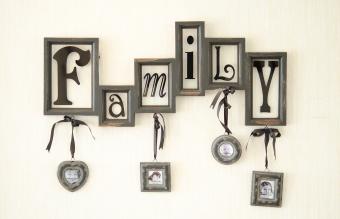
Using mandalas in feng shui design and décor is a great way to infuse the energy of this meditation spiritual symbol into your home. You can choose a mandala design based on its meaning then decide where to place it using feng shui principles.
Mandala Décor Inspiration
Mandala is the Sanskrit word for circle. The circle is a universal symbol for spirituality and the continuation of life. Tibetan monks make sand mandalas as meditation tools and reminders that life is impermanent. If you're creative, you may opt to create your own mandala out of more permanent materials to frame and placed in a special feng shui location.

Using Different Mandalas in Feng Shui Design and Décor
You have many choices when it comes to using mandalas in feng shui design and décor. You may prefer historical mandalas, modern designs or a printable mandala you can color or paint to go with your existing décor. You can print a free mandala, frame it and place it in a prominent feng shui position in your office, living room, meditation room, or other room.

Historical Mandalas and How to Use Them
There are specific historical mandalas you can use in your feng shui décor. These have complex ancient symbols often woven into a story design. The mandalas of Tibet feature an outer circle with an inner square. You can also find an outer circle mandala design with a smaller inner circle (the world).
Five Wisdom Kings Mandala (Womb Realm)
The Womb Realm, also referred to as the Matrix World, represents the metaphysical realm where the Five Wisdom Kings reside. It's a historical representation of the Buddha sharing the secret teachings conveyed by the mandala to Vajrasattva, his disciple. It's said that the Buddha gave this information out of his womb of compassion.
Placing the Mandala
There are several feng shui sectors where you can use this mandala. Select the one that best fits your personal situation.
- In Japanese Esoteric Buddhism, the Womb Realm Mandala is placed in the east to represent the learning and growing of youth within the physical world.
- In feng shui, the northeast governs education so this would be another sector you can place this power mandala.
- Another location is your Personal Growth (Fu Wei) direction based on your kua number.
- If you want to give your career a boost, you can place this mandala in the north sector (career) or set it in the south sector (recognition and fame).
Five Buddhas Mandala (Diamond Realm)
The Five Buddhas Mandala (Diamond Realm) represents Buddha's final stage of spiritual/physical freedom from rebirth is often paired with the Five Wisdom Kings Mandala (Womb Realm). You may prefer to use the combination Mandala of Two Realms.

Sri Yantra Mandala
The Sri Yantra Mandala is a sacred geometric yantra (mystical diagram) representing the divine union of male and female energies. Made of nine concentric layers featuring multiple triangles, the mandala also has an outer circle of 16 lotus petals and an inner circle of eight lotus petals. In feng shui applications, you can use this mandala to clear away any obstacles or challenges. Place this mandala in the appropriate sector where your feeling blocked. Spend time in this area meditating on the mandala to see the obstacle disappear from your life.

Dharma Wheel of Eightfold Path Mandala
Another traditional mandala is the Dharma Wheel. The Noble Eightfold Path is often incorporated into this familiar circle. The Nobel Eightfold Path is also known as the path to perfection.
Mandala Buddhist Teachings and Placement
The Buddha is seated in the center of the Dharam Wheel that has eight spokes, one for each of the noble paths to enlightenment. You can place this mandala in any sector of life where you are struggling, such as the southwest (love and relationship) or west (descendants).
Tibetan Kalachakra Mandala
The all-knowing diety, Kalachakra is time itself and is all that flows through time. The Kala (time) chakra (cycles) mandala depicts the different cycles of life. The infinity of the wheel is depicted with an outer circle and several inner circles with eight Dharam wheels evenly spaced within one of the circles that give over to multiple squares within squares. Various religious symbols grace the colorful mandala.

Guru Rinpoche Celestial Mandala
The Guru Rinpoche (Lotus Buddha) also known as the Precious Guru was an eighth century sage. Said to be the second Buddha, Guru Rinpoche built the very first Tibetan monastery. You invite this sage into your home by placing the Guru Rinpoche Celestial Mandala in a prominent location. Guru Rinpoche removes the inauspicious and afflicted areas of life, especially when you place this mandala in the problem sector.
- The mandala can be placed in the east sector to provide protection of your health.
- Use this mandala in the southeast to reap your karmic wealth.
- If a love relationship is the karma you wish to call upon, place the mandala in the southwest sector.
- A karma reaping of recognition and fame can be activated by placing the mandala in the south sector.
Mandala Symbols for Feng Shui Décors
When deciding on the mandala you wish to use in your feng shui design, pay attention to the different symbols and color. Learn the story behind the mandala and what it represents. These are all key to your selection and ultimate placement of the mandala.
Symbols, Deities and Elements
Not all mandalas feature The Buddha, some feature Chinese gods, characters, symbols and shapes. The elements are often depicted within the inner circle, such as fire or water. You may discover some mandalas feature the yin yang symbol, dragons or other Chinese zodiac animals.
Combining Mandalas with Elements
Another unique way to use a mandala is to incorporate it with an element. For example, you may paint a mandala or create a mosaic on an element, such as a rock (northeast or southwest placement), a metal object (west or northwest placement), a candle holder or lantern (south placement), a wood object (east or southeast), or a water fountain (north sector).

Ways of Using Mandalas in Design and Décor
Once you select a mandala, place it where you can easily see it all the time. The goal of using a mandala is to assist you in meditation to open your third eye (inner eye) that will guide you to enlightenment. In feng shui, you can imbue the placement sector with this sacred and spiritual energy of attainment.







